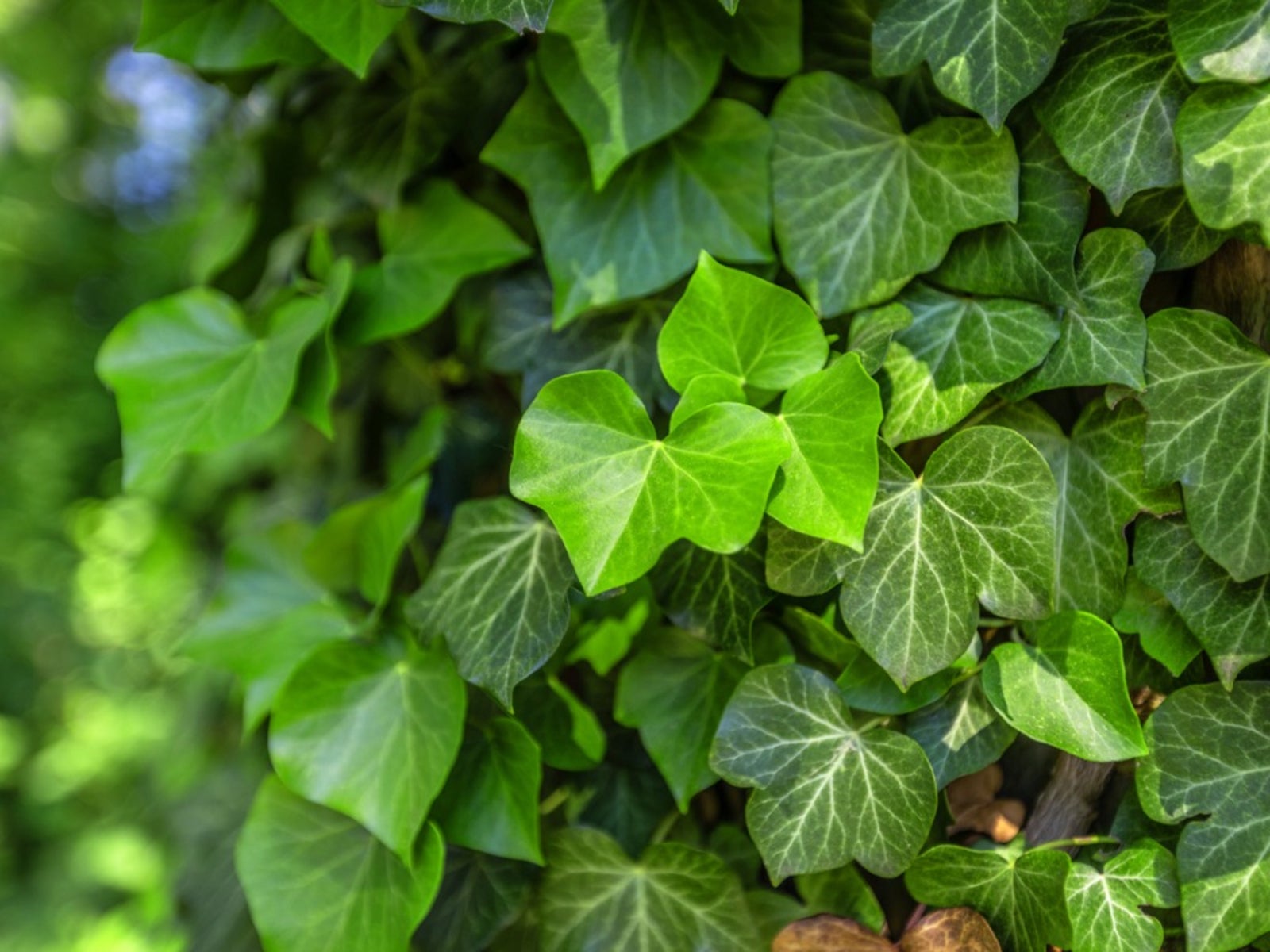Pros And Cons Of Planting English Ivy In The Landscape
English ivy is beautiful but not always practical.


Ivy gets a bad rap, but it's an attractive vine that is easy to grow. Sure, it can take charge and cover more things than you intended, but responsible English ivy growing is possible. There are plenty of English ivy pros, and we hope you'll consider them before banning this plant from your yard altogether.
English Ivy Pros - Responsible English Ivy Growing
(Mary Ellen's viewpoint) There are many naysayers who will tell you to avoid this plant like the plague, but I think there are several reasons to plant English ivy and enjoy it in the garden or indoors:
Ivy complements, not kills trees. A common misconception about English ivy is that it will kill trees as it climbs up the trunks. Ivy is a shade-loving plant, so it will stay beneath the canopy and will not block the tree from getting sunlight. Only in cases of weakened or unhealthy trees is ivy harmful. The beauty of climbing vines on a tree trunk is one reason to let ivy do its thing in your yard.
Ivy makes a nice shady groundcover. Ivy doesn't have to climb. If you're willing to maintain it, you can keep English ivy at ground level. And, since it grows well in shady areas, you can use ivy as a pretty, dark green groundcover in those areas where it's difficult to get anything else to grow.
English ivy makes a beautiful potted topiary. Grow ivy in a container, indoors or outdoors, and because it climbs so well, you can train it to grow into a pretty topiary. Use a wire form to create the shape you want, and before you know it this fast-growing vine will fill it out and give you a gorgeous potted plant. It's easy to regularly trim ivy to keep it the size and shape you want. Even without a topiary shape, English ivy is easy to grow in containers and makes a nice, hands-off house plant.
Choose from varied cultivars. The English ivy that most people are familiar with has glossy, dark green leaves, but there are many other cultivars with different colors and leaf shapes. You can get diversity in the garden with these pretty options. Examples include 'Anne Marie,' with its variegated leaves and white margin; 'Buttercup,' which has light green leaves in the shade and bright yellow leaves in the sun; and 'Jubilee,' with gray green variegation and miniature leaves.
English Ivy Problems - Cons of Planting English Ivy
(Mary's viewpoint) With its profusion of shiny, dark green leaves, there's no doubt that English ivy is a lovely plant, and because it's an evergreen, it remains beautiful year round. Unfortunately, this nonnative climber is an invasive thug in the Pacific Northwest, and is also considered invasive in California and many southeastern states, including Mississippi, Tennessee, and Virginia. Wondering about the disadvantages of English ivy?
Sign up for the Gardening Know How newsletter today and receive a free copy of our e-book "How to Grow Delicious Tomatoes".
English ivy escapes easily from home gardens. Even if you grow ivy in pots, which may seem safe, birds can transfer the seeds for many miles.
Quickly grows and strangles nearby plants. Once ivy is established in the wild, it can grow as much as 15 feet (5 m.) every year, strangling any native plants or trees in its path. Even tall, mature trees are deprived of air and sunlight, and because they are so unhealthy and weighed down by the heavy vines, they are more likely to break or topple over in a windstorm.
It's not easy to get rid of. Clearing ivy from the trunk isn't as easy as it sounds, as the roots can become intermingled with the roots of the tree, and rodents and insect pests find shelter in the dense foliage. Taxpayers in the Oregon and Washington have paid millions of dollars in attempts to manage English ivy problems.
Damages other structures. English ivy can also do severe damage to buildings when the rootlets attach themselves. The plants can stick so firmly that they remove paint, damage siding, and can even grow through window casings into the inside of the building.
These plants are toxic. If that's not enough, consider that English ivy berries and leaves are toxic if ingested, and the sap can cause severe skin irritation.
How to Avoid the Disadvantages of English Ivy
Responsible English ivy growing is not hard. It's just a matter of being a thoughtful gardener and deciding where and to what extent you'll let your ivy roam.
If it still makes you nervous to work with this plant, keep it contained and enjoy pretty ivies in pots.
If you live in a part of the country with English ivy problems and you're in the market for an attractive perennial vine, or if you need a good groundcover for a difficult area, consider alternatives such as crinkle-leaf creeper (Rubus pentalobus), native Western honeysuckle (Lonicera cilosa), or climbing hydrangea (Hydrangea anomala).

A Credentialed Garden Writer, Mary H. Dyer was with Gardening Know How in the very beginning, publishing articles as early as 2007.